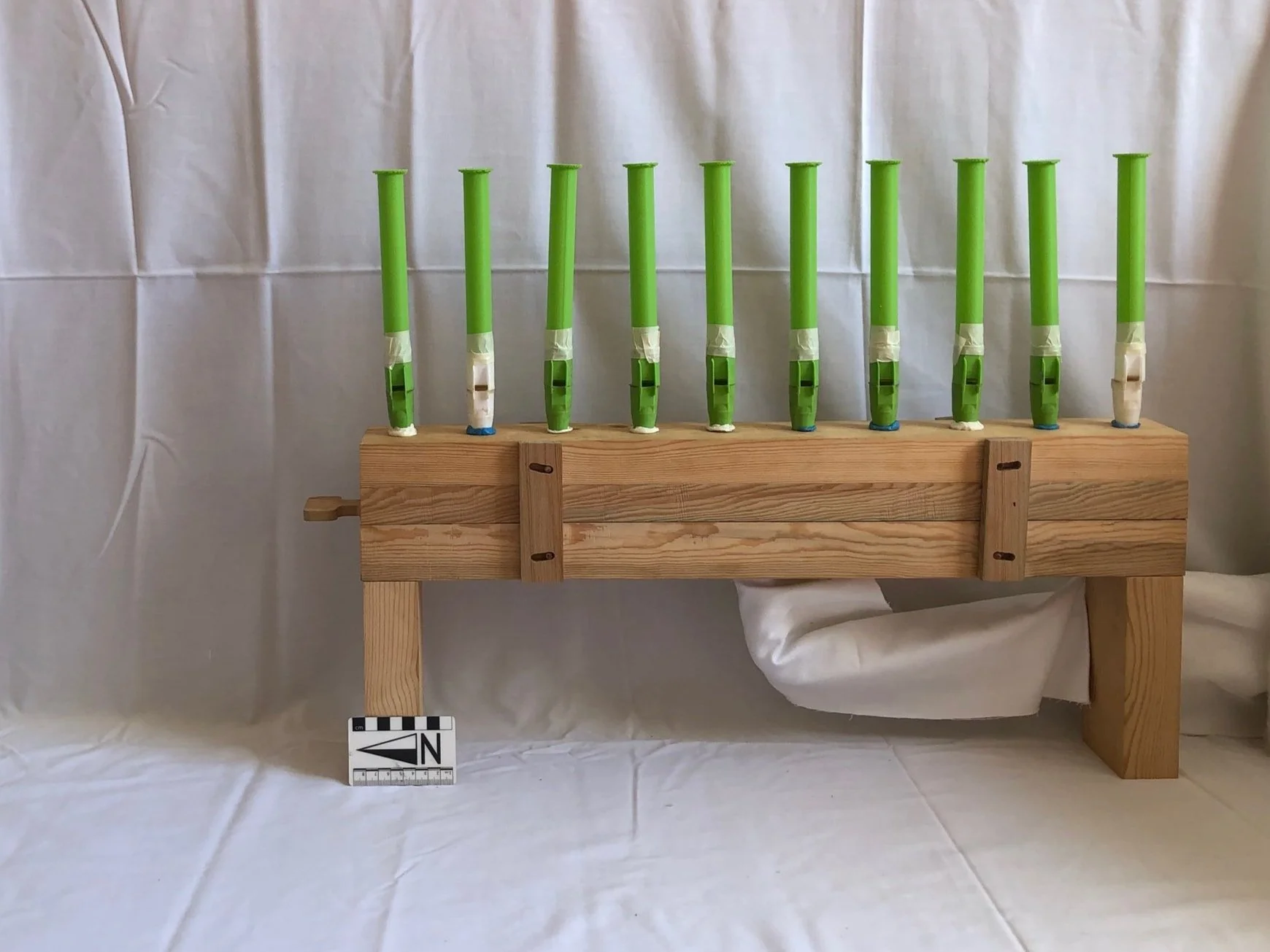The Organ
The largest and perhaps most impressive instrument of the time was the organ. While there are no known archaeological remains from Anglo-Saxon England, descriptions and manuscript images from this period do exist. With sheet metal pipes formed around a mandrel, a wooden wind chest with carefully carved out channels connected by a wooden arm to the bellows unit featuring more carved out channels and leather bellows, the organ represented a feat of engineering and has been described as the most complex object, along with the clock, prior to the industrial revolution. The pipes, according to pipe treatises of the time were measured using Pythagorean ratios. Unlike organs of today, the Anglo-Saxon instrument featured sliders and no keyboard.
In 992-994, Wulfstan described the organ which stood at Winchester in part of his Narratio metrica de S. Swithuno.This organ was supposedly extremely large, even by standards of the time. A double organ, with 400 pipes and 26 bellows, with two people working the sliders – this instrument would have created a loud sound, potentially one of the loudest of the period. Experimentation suggests it might have been heard across the whole of Winchester when played. The Winchester organ is described as having 10 pipes for each note; multiple pipes per note appears to have been a feature of organs during this period. The sounding mechanism is not entirely clear. Experimentation would suggest reed pipes may have been more likely on the Winchester instrument.
The diagram on the right shows what the front of half the organ at Winchester may have looked like with just the top layer of bellows. The quotes are from Wulfstan’s description of the instrument. Translation by Professor Stephen Oakley (University of Cambridge).
Watch and listen to the videos below to see how the slider would have worked and the sound of different types of mechanisms.
A 3D representation of what the organ at Winchester may have looked like. Made from gingerbread, chocolate cake and chocolate brownie, there is a degree of artistic licence with a decreased number of ranks of pipes and sliders (only 11 instead of 20 per organ) and only the top row of bellows showing (there would originally have been a further 14 underneath). The proportions of the representation are all to scale according to the measurements given in Theophilus’ treatise.
Using Theophilus’ treatise on organ building, along with the other sources, notably Wulfstan’s description of the Winchester organ, enabled a recreated wind chest for a single rank of 10 pipes to be made. When pulled out the slider allows air to rush up into the mechanisms, sounding them. The videos below show this wind chest worked and how a slider mechanism would have worked in Anglo-Saxon England. The air was supplied using electric bellows, but in the Anglo-Saxon period would have been supplied by hand-pumped bellows. The following videos show the organ playing with Phragmites australis reeds, swan feather reeds, sheet metal reeds with a 3D printed shallot (to carry the vibration) and flue pipes, showing different possible pipe mechanisms and what they might have sounded like at the time. The reeds would have had pipes, acting as resonators, added.
Single rank of organ pipes sounded by Phragmites australis reeds.
Single rank of organ pipes sounded by swan feather reeds.
Single rank of organ pipes sounded by sheet metal tongue reeds (with a 3D printed shallot).
Single rank of organ pipes sounded by (3D printed) flue pipes.
To continue exploring the wind instruments, click here.





